From Order to Table: How Tablets are Transforming the Restaurant Industry
Digital devices like tablets have become a vital part of the corporate sector almost in every industry. Restaurants have adopted digital methods to transform their businesses to improve customer satisfaction and retention.
Nowadays, we usually observe a tablet on restaurant tables next to ketchup and other sauces. These tablets serve the purpose of facilitating customers at the table to watch the menu. They can place an order without leaving the chair and even pay the bills using these tablets.
In this article, we will discuss the applications of tablets in restaurants with the best management tools.
Part 1. 6 Best Ways to Use Tablets at Your Restaurant
1Guest ordering
Restaurant owners can enhance the dining experience and customer engagement by providing a table-based ordering system.
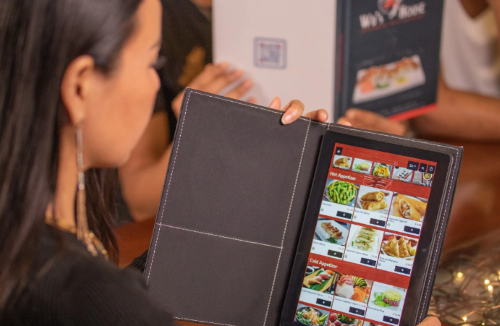
- Tablets for restaurant menus help replace the traditional time taking and labor-consuming paperwork for taking customer orders. Customers can select the meal from the digital menu to place the order.
- Tablets provide various options to customize and add additional items. Customers can mention extra toppings, sides, and cooking preferences. It also ensures that the cook has received the cooking requirements.
- With the tablet's digital display, management can display interactive images to attract customers with combo deals, family packs, and other offers on various events.
- Tablets also eliminate language barriers. Customers can select their preferred language to understand the food items and place the order.
2Payment processing - POS system
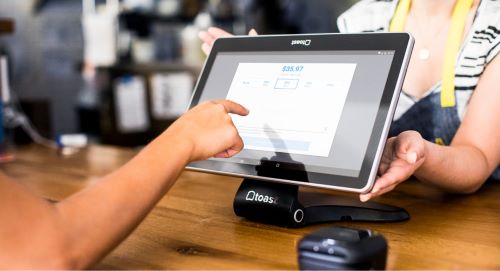
- Management can integrate the tablet POS system for restaurant to streamline the check-out process. It allows customers to pay bills online using their account details with no waiting time.
- Billing through tablets reduces the risk of mistakes and helps managers to deliver the exact bill instantly. This accuracy also has a positive impact on the customers.
- With tablets, you can create real-time reports and analyze factors like customer preferences, daily sales, and expenses. It automates the financial system to maintain balance.
- Cash payments are insecure as compared to payments in bank accounts. It reduces the efforts to check the authenticity of cash delivered. Moreover, restaurant owners can easily manage their money online.
3Kitchen display system
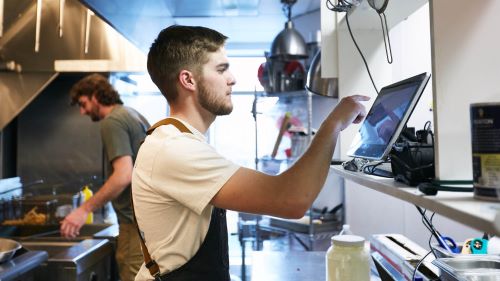
- The team can display automatic order status using the restaurant tablet ordering system. Cook can manage the delivery time and prioritize the orders for smooth delivery. Any amendment in the order can quickly communicate to the kitchen staff using the kitchen display system.
- Digital tickets are generated for the orders to eliminate hurdles of lost tickets, and chances of error are minimized. It ensures smooth working by streamlined order processing.
- Tablets are integrated with other devices like kitchen displays and POS systems to ensure each process is done accurately. Everything is transparent.
- Kitchen staffs can timely update the stock information to help management smoothly make changes without any additional cost.
4Inventory management
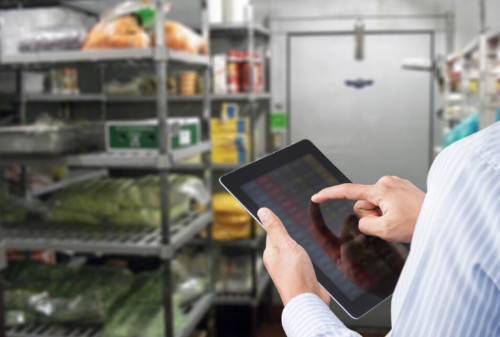
- A digital inventory management system provides real-time stock availability so the restaurant managers can arrange the items timely and ensure the availability of all food items.
- Restaurants can utilize the reports of inventory management systems to analyze the costs of items purchased and the food delivered. It will define the usage and consumption patterns to create a balance in pricing.
- Tablets having barcode scanners are used for minimizing manual data entry and improving the accuracy of stock maintenance.
5Digital advertising kiosk
Businesses have to pay high advertising costs, but tablets for restaurants are the free source. When the devices are free, they are set into kiosk mode with an appealing video with restaurant-related content.
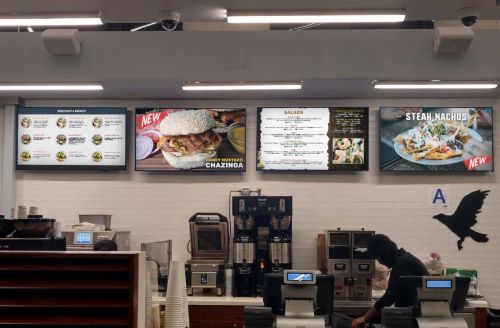
Part 2. How are Tablets Transforming the Restaurant Industry?
Tackle labor shortages
Restaurant ordering tablets is a significant factor in reducing costs. They are utilized for versatile purposes, automating tasks that save customers time, and help owners manage the restaurant with minimum labor. Restaurants can run even when labour is short by automating payments and order placement.
Improve customer experience
Customer retention improves when they are given the best services. A friendly environment with smooth order placing and payment methods enhances customer experiences.
Speed up service
The traditional order-taking process could be more challenging. No one likes waiting for a turn in a restaurant. Tablets on each table in the restaurant enable visitors to view the menu and place an order instantly. After enjoying their meal, customers can use the QR code for convenient online payment.
Cross-selling and upselling
Tablet for restaurants are the best opportunities to cross-sell additional eating items with the ordered food. It improves customer experience and creates a trend for the future too.
Gathering customer feedback
Customer feedback on paper is less effective than when it is collected digitally on tablets. By utilizing tablets, managers can receive instant feedback on their devices, allowing all staff members to access and utilize the information to improve services. Additionally, restaurant owners can gain valuable insights into customer preferences and concerns.
Part 3. Top 3 Tablets for Restaurants & Cafes
1Samsung Galaxy
Samsung Galaxy Series is claimed to be the restaurant tablet best practice. Since its launch in 2010, Samsung is continuously upgrading its features to the latest models.
Different Samsung Galaxy tablet series models have unique features to meet business requirements and help them strengthen their businesses with high-security features.
They are known for their sleek designs and are available in different sizes to meet the needs of various industries.
Example:
- McDonald's is a fast food brand operational worldwide. It first initiated Samsung Galaxy tablets in London branches to test its results. The purpose of installing tablets is to give additional fun to children and families to play games and use social media. This initiative has not only improved customer experience but also has positively affected their sales.
2Ziosk
Ziosks are specially designed tablets, preferably medium size, explicitly used in restaurants and hospitality service points. It is on the tables so customers can place orders and pay the bills immediately.
Ziosks have influenced a lot in restaurants, especially in improving customer experience. These devices usually are 7 inches and have Android OS. These touch-screen devices also have credit card readers for online billing.
Example:
- Chili's is a renowned brand that has installed 4500 table-top Ziosk devices in its 823 branches. These tablets serve Chili's customers to place orders and pay bills online. Additionally, it also displays the news from the USA.
3iPad
iPad is a tablet-styled digital device launched in 2010 by Apple. It has almost the same features as iPhone but is more prominent in size, with additional applications to run in different industries like restaurants and Café.
Four basic versions of the iPad are iPad, iPad Mini, iPad Air, and iPad Pro. All these versions have further models in different sizes and colors.
Example:
- Olive Garden is a casual dining restaurant that has installed iPads in its branches to streamline payment processes and for guest self-ordering.
Part 4. Working Principles of Restaurant Tablets
1. Software integration & restaurant automation
Tablets must be able to integrate with various software that streamlines the management process of restaurants. They must enable the automation of restaurant processes like order taking, delivery status, and payments to improve the overall dining experience for visitors.
Centralized systems like POS and kitchen management are necessary for the best services. You must integrate the tablets placed on the tables with these systems. When a customer places an order from the tablet, it is updated to different areas of the restaurant, like the kitchen, and they start preparing the food.
After order placement, information is shared with the POS system to maintain the record in inventory, and then order details are sent to the kitchen management system.
2. POS integrations for restaurants
What are POS integrations?
POS integrations mean a real-time connection between POS software with your restaurant devices like tablets. POS integration is mandatory to streamline transactions and keep track of them.
POS details provide insights into the restaurant's budgeting, investments, and revenue. Choosing the POS integrations demands the best software tools that are reliable with your devices.
An efficient POS system supports hardware integrations, inventory management, payment processing, loyalty and marketing, order and vendor management, and many other benefits.
Features of the best POS system for your restaurant
- A sophisticated POS system provides an intuitive and friendly user interface for performing transactions smoothly.
- It supports various payment methods to enhance customer experiences, like credit or debit cards, mobile wallets, and contactless payments.
- POS provides complete order tracking status for smooth delivery of food.
- POS can work at different locations with centralized control for data security and reporting.
Part 5. Security Tips
As restaurant tablets are exposed to every visitor, so there is high risk of damage to confidential data and devices. So, it is highly recommended to secure the network and data security.
We have the best MDM solution to meet all your restaurant business endpoints. AirDroid Business enables restaurant management to set all tablet devices into kiosk mode and make the devices purpose-built with high-security parameters. Here are some significant benefits of the AirDroid Business remote tablet management:
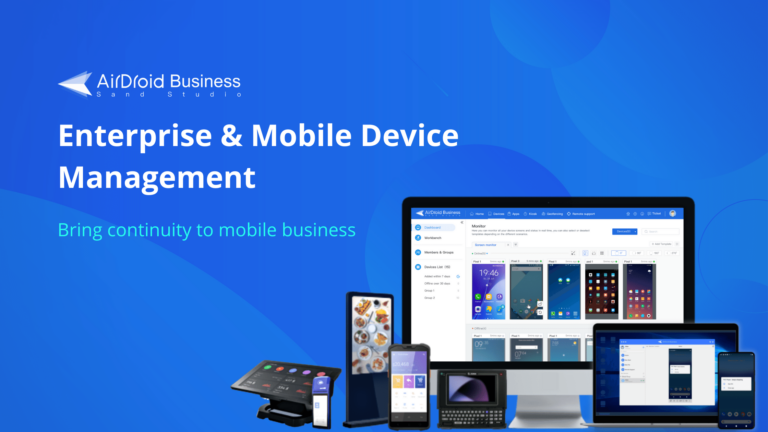
- Admins can remotely monitor tablet activities from a single console without touching them.
- They can remotely monitor all activities and even diagnose the device issues to troubleshoot them for proper functioning.
- Admins can remotely set the devices into kiosk mode, allowing only single or multiple apps to run on the tablets.
Conventional disinfection
- Restaurant owners must use high-quality tablets so they do not wear out when regularly cleaned.
- Restaurants must utilize ‘no-touch’ transactions to avoid viral diseases.
- High-touch surfaces of devices should be disinfected regularly.
Cyber security tips
- As the tablets contain sensitive restaurant data like menu and pricing, you are secure the data with high data encryption.
- In case of theft or loss, AirDroid Business enables admins to remotely lockdown the device and factory reset it to secure the data.
- Admins can also monitor the real-time location of all tablet devices to track delivery status.
- You can use AirDroid Business to set strong password policies. It also offers two-way authentication to add another security layer to the devices.
Part 6. Conclusion
The corporate sector has digitalized everything to give an impressive look to businesses in every industry. Like other industries, restaurants are transformed with the latest tools for customer ease and smooth management. One of the outstanding achievements is the use of tablets in restaurants. These tablets have minimized staff workload and even saved a heavy cost for owners with minimum staff. Here the need arises to safely use these tablets and manage them through an authorized channel to streamline workflow. An MDM solution to enroll all tablets in a single system is the best way to manage, monitor and secure the tablets in restaurants remotely.




Leave a Reply.